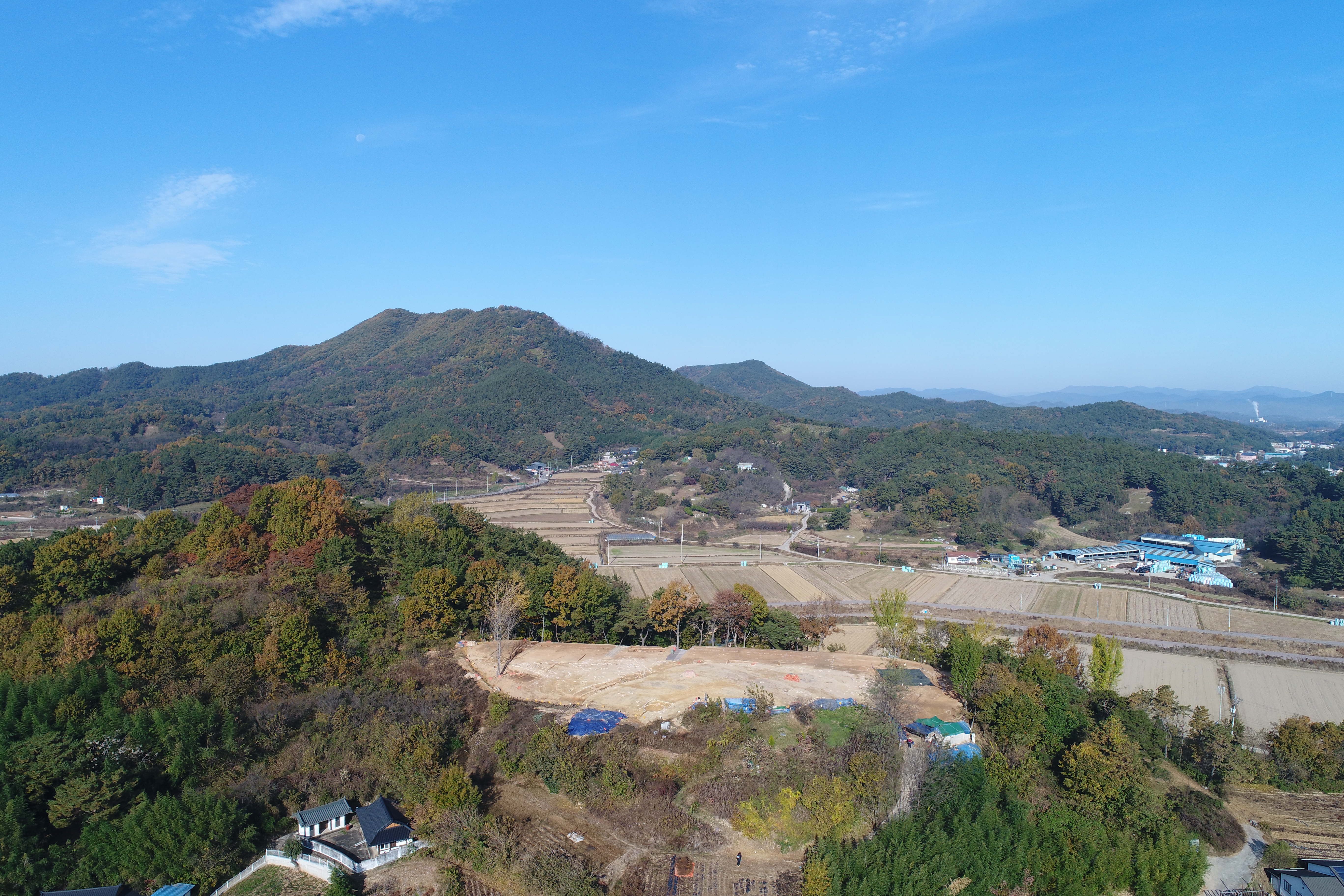<location of the site>
카카오맵
당신을 좋은 곳으로 안내 할 지도
map.kakao.com
Archaeologists have found traces of a cooking-only building from the 6th century during the Ara Gaya period, equipped with furnace, floor tunnels and chimney facilities, in what is believed to be the site of Ara Gaya's royal palace located in Haman-gun, Gyeongsangnam-do.


Excavating the royal palace site since 2018, the Gaya National Research Institute of Cultural Heritage announced on the 10th that it has discovered traces of kitchen made by cutting down sloping rocks.
11m long, 5m wide, and 80cm deep, the kitchen site hase a wall 8m long, 3.5m wide, and 15cm high on the cut surface of the rock, with a furnace, floor tunnel called gudeul, and a chimney lined up inside.
The institute added that there is a high possibility that the outer walls are separately equipped as wooden column holes with regular intervals are identified around the building site.


According to a survey, the inside floor of the building site was mowed 1~2cm thick and heated to make it firm.
An official from the institute said, "The exact size and shape of the furnace exist only at the lower end, so we cannot grasp the exact size and shape."
Gudeul built flat stones with a maximum length of about 1m and a height of about 50cm, and applied gray clay to the outside to prevent smoke from leaking out. However, the exact structure was not confirmed because there was no upper part left.
Near the chimney, a stone with a circular hole has been found. The researchers estimates that the water needed for cooking was stored.

The relics include a cylindrical pottery stand, which is believed to be a relic of the Gaya Dynasty in the 6th century, and a reddish-brown cooking earthenware.
The typical characteristics of Gaya pottery, such as wave-patterned decorations and round holes, were observed in the cylindrical stand. In addition, curved jade and bird-shaped holes, known as Ara Gaya earthenware properties, dotted decorations characterized by soya earthenware, and a pair of square holes were also identified.
Ara Gaya, also known as Ana Gaya, was a kingdom situated around what is now the town of Haman in South Korea's South Gyeongsang Province, from 42 B.C. to A.D. 559.
아라가야 왕궁터서 아궁이·굴뚝 갖춘 취사건물 흔적 확인
박상현 / 2021-06-10 09:41:49
국립가야문화재연구소 조사…원통모양그릇받침 등 토기도 나와
https://k-odyssey.com/news/newsview.php?ncode=179541953727035
아라가야 왕궁터서 아궁이·굴뚝 갖춘 취사건물 흔적 확인
(서울=연합뉴스) 박상현 기자 = 경남 함안 아라가야 추정 왕궁터에서 아궁이와 구들, 굴뚝 시설을 갖춘 취사 전용 건물 흔적이 확인됐다.국립가야문화재연구소는 2018년부터 발굴조사를 진행 중
k-odyssey.com
'NEWS & THESIS' 카테고리의 다른 글
| 전곡의 산증인 임종태 선생과 최순임 여사를 추모하며(by 이한용) (0) | 2021.06.11 |
|---|---|
| 날망이 아닌 구릉에서 찾았다는 합천 옥전 가야 공동묘지 (0) | 2021.06.10 |
| 《부풍승람扶風勝覽》, 부안 유림이 정리한 부안의 역사 (0) | 2021.06.10 |
| 두덱을 망연자실케 한 월드컵 영웅 유상철 (1) | 2021.06.07 |
| 2021 부산민속문화의 해 기념 특별전 《부산, 바다와 뭍의 나들목》 (0) | 2021.06.03 |




댓글